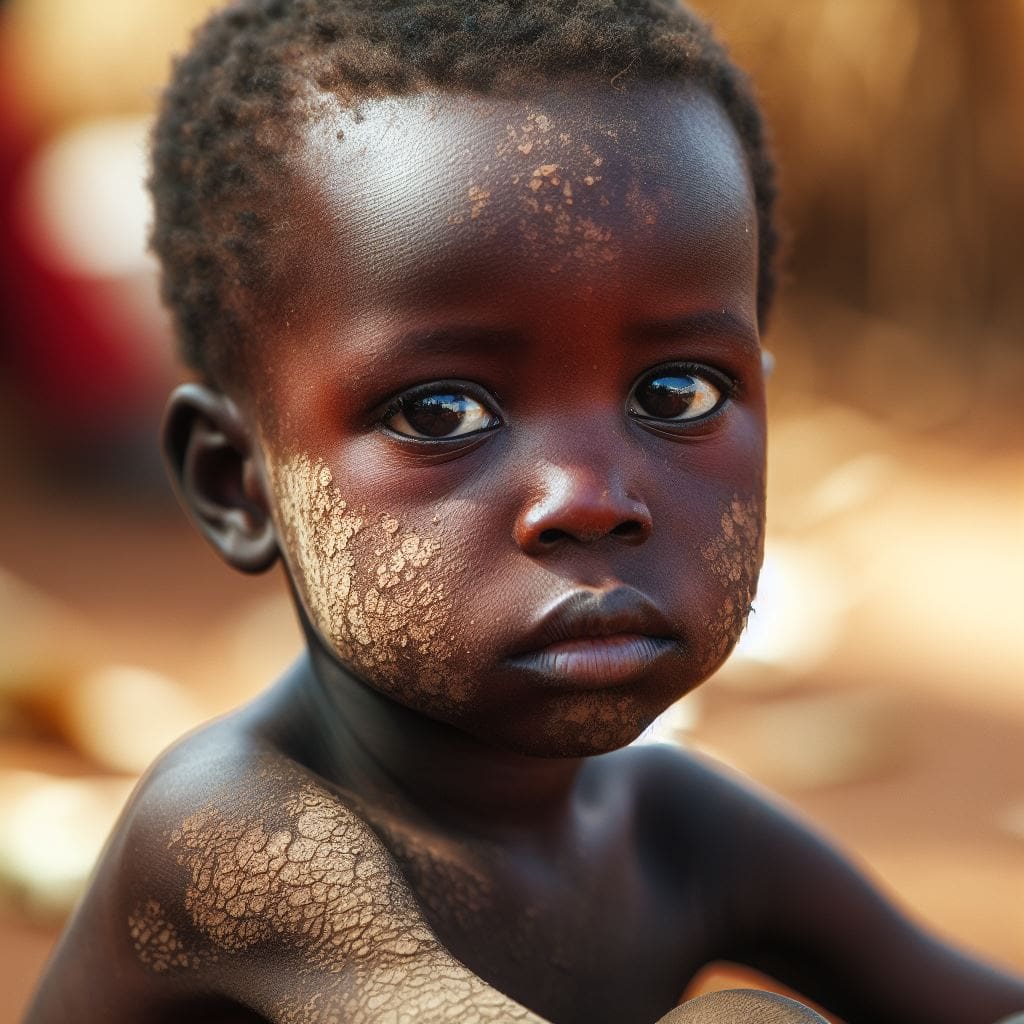
Skin infections are common in children and can be caused by various factors.
Understanding the causes and knowing how to prevent them is essential for maintaining your child’s skin health.
Kids are messy! They love exploring the world, which sometimes means getting cuts, scrapes, and bug bites. While these are all part of growing up, they can also be entry points for skin infections.
Ensuring the health and well-being of our children is a top priority for parents and caregivers. One crucial aspect of their health that often requires attention is their skin.
Children’s skin is delicate and vulnerable to a variety of infections, ranging from minor irritations to more serious conditions. As parents, it’s essential to be proactive in protecting our children’s skin and preventing infections before they occur.
In addition to the common preventive measures like promoting good hygiene habits and keeping the skin clean and dry, there are several other strategies we can implement to minimize the risk of skin infections in children.
By taking a comprehensive approach to skin care and considering factors such as sun exposure, stress management, and allergy management, we can create a protective shield around our children’s skin, keeping it healthy and resilient against infections.
In this article, we’ll explore the different types of skin infections, their causes, and prevention tips, ensuring your child’s skin stays healthy and free from infections.
Types of Skin Infections in Children:
1. Impetigo:
It is commonly spread through close contact with an infected person or contaminated objects.
2. Ringworm:
Despite its name, ringworm is not caused by a worm but by a fungal infection.
It causes red, itchy, ring-shaped rashes on the skin and is spread through direct contact with an infected person or animal, or by touching contaminated surfaces.
3. Fungal Infections:
Other fungal infections such as athlete’s foot (tinea pedis) and jock itch (tinea cruris) can also affect children’s skin, causing redness, itching, and discomfort in affected areas.
Causes of Skin Infections in Children:
1. Poor Hygiene:
Inadequate hand washing, sharing personal items like towels and clothing, and not bathing regularly can increase the risk of skin infections in children.
2. Close Contact:
Skin infections are often spread through close contact with infected individuals or contaminated objects, such as sharing towels, bedding, or sports equipment.
3. Warm and Humid Environments:
Fungi and bacteria thrive in warm, humid environments, making children more susceptible to skin infections, especially in hot weather or during activities that cause sweating.
4. Compromised Immune System:
A weakened immune system may not be able to effectively fight off bacteria, viruses, or fungi that cause skin infections.
5. Skin Injuries or Irritations:
Cuts, scrapes, insect bites, or other skin injuries can create openings for bacteria, viruses, or fungi to enter the skin and cause infections.
Similarly, irritants such as harsh soaps, detergents, or chemicals can damage the skin’s protective barrier and increase the risk of infection.
6. Allergies or Sensitivities:
Children with allergies or sensitivities to certain substances, such as certain fabrics, metals, or skincare products, may experience skin reactions or infections when exposed to these triggers.
Allergic reactions can cause inflammation, itching, and irritation, making the skin more vulnerable to infections.
7. Poor Nutrition:
Poor nutrition can also lead to skin conditions such as eczema or dermatitis, which can increase the risk of secondary infections.
8. Underlying Skin Conditions:
Children with underlying skin conditions such as eczema, psoriasis, or acne may be more prone to developing secondary infections.
Skin conditions that cause dryness, inflammation, or breaks in the skin’s barrier can provide an entry point for bacteria, viruses, or fungi to cause infections.
7. Excessive Moisture or Sweat:
This can lead to conditions such as diaper rash, intertrigo (skin fold rash), or fungal infections like athlete’s foot or jock itch.
8. Exposure to Contaminated Water:
Swimming pools, hot tubs, lakes, and other bodies of water can harbor bacteria, parasites, or other pathogens that can cause skin infections.
Children who spend time in contaminated water without proper hygiene practices, such as showering after swimming, may be at risk of developing infections.
Prevention Tips for Skin Infections in Children:
1. Promote Good Hygiene Habits:
Teach your child the importance of regular hand washing with soap and water, especially before eating and after using the bathroom.
Encourage them to bathe or shower daily, using mild soap and warm water.
2. Keep Skin Clean and Dry:
Ensure that your child’s skin is kept clean and dry, particularly in areas prone to sweating, such as the armpits, groin, and between the toes.
Dress them in breathable, loose-fitting clothing made from natural fibers like cotton.
3. Avoid Sharing Personal Items:
Discourage your child from sharing personal items such as towels, clothing, hairbrushes, and sports equipment with others, as this can spread infections.
4. Practice Good Foot Hygiene:
Teach your child to keep their feet clean and dry, especially after swimming or participating in sports.
Encourage them to wear flip-flops or water shoes in communal showers or locker rooms to reduce the risk of fungal infections like athlete’s foot.
5. Regularly Clean and Disinfect:
Regularly clean and disinfect commonly touched surfaces and objects in your home, such as doorknobs, light switches, and toys, to prevent the spread of germs and bacteria.
6. Seek Prompt Treatment:
If you notice any signs of a skin infection in your child, such as redness, swelling, or sores, seek prompt medical attention.
When to Call the Doctor
Most skin infections can be treated at home with proper cleaning and care. However, if you notice any of the following, it’s best to call your doctor:
- The infection appears red, swollen, or painful
- There is pus or drainage
- The infection doesn’t improve with home care
- Your child has a fever
Early diagnosis and treatment can help prevent the infection from spreading and speed up the healing process.
7. Maintain Proper Skin Care:

Establish a regular skincare routine for your child, including moisturizing dry skin and using gentle cleansers suitable for their skin type.
Avoid harsh soaps, detergents, or skincare products that may strip the skin of its natural oils and disrupt its protective barrier.
8. Protect Against Sun Exposure:
Limit your child’s exposure to the sun and encourage the use of sunscreen with a high SPF to protect against harmful ultra violent rays.
Sunburns and prolonged sun exposure can damage the skin and increase the risk of infections, so it’s essential to practice sun safety measures, such as wearing protective clothing and seeking shade during peak sun hours.
9. Manage Stress:
Stress can weaken the immune system and exacerbate certain skin conditions, making children more susceptible to infections.
Help your child manage stress through relaxation techniques, such as deep breathing, mindfulness, or engaging in enjoyable activities like hobbies or sports.
10. Pmote Healthy Sleep Habits:
Adequate sleep is essential for overall health and immune function.
Ensure that your child gets enough sleep each night by establishing a regular bedtime routine, creating a comfortable sleep environment, and limiting screen time before bed.
11. Encourage Physical Activity:
Encourage your child to engage in physical activity and outdoor play while practicing good hygiene habits, such as showering and changing into clean clothes afterward to remove sweat and bacteria.
12. Teach Proper Wound Care:
Instruct your child on how to properly care for minor cuts, scrapes, and insect bites to prevent infection.
Clean the wound with mild soap and water, apply an antiseptic ointment, and cover it with a clean bandage or dressing until it heals.
13. Monitor Allergies and Sensitivities:
Be aware of any allergies or sensitivities your child may have to certain foods, medications, or environmental triggers.
Avoid exposure to known allergens or irritants that may trigger allergic reactions or skin sensitivities, leading to inflammation or rashes.
Conclusion
By following these simple prevention tips and promoting good hygiene habits, you can reduce the risk of skin infections in your child and keep their skin healthy and free from infections.
Remember to lead by example and reinforce the importance of cleanliness and hygiene in your daily routines.




